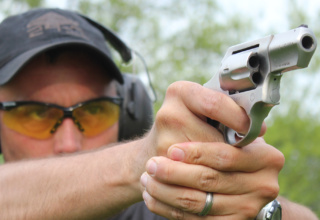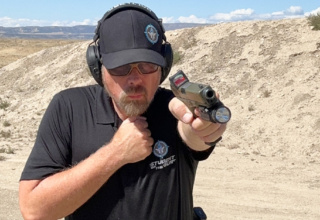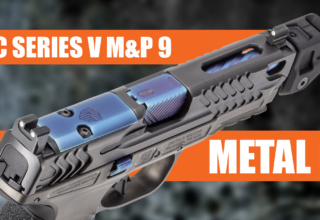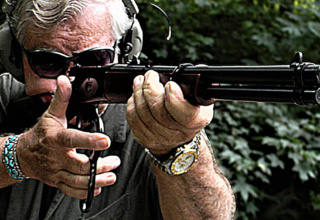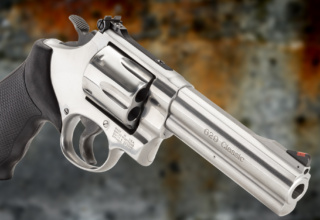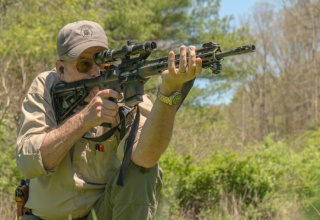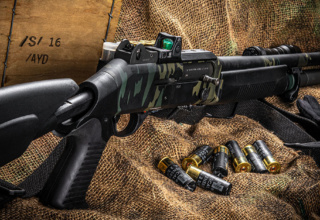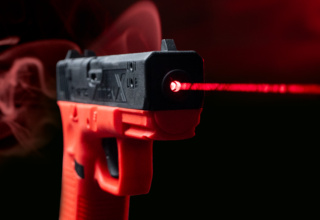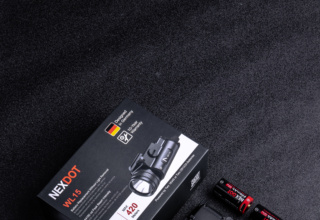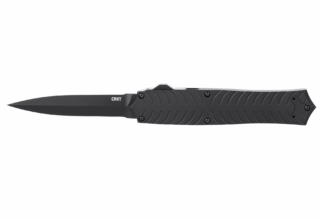More than a snubbie, less than a medium frame, the new Taurus Defender 856 may be the carry concealed revolver you’ve been wanting all along.
by Bob Campbell; photos by Bob Campbell and Rob Reaser
A few months ago, Taurus introduced the Defender 856 .38 Special revolver. The Defender 856 is a J-frame-type revolver, referring to a small-frame revolver with a five-shot cylinder chambered in .38 Special. Sometimes called a .38 on a .32 frame, the J-frame is a popular type for concealed carry.
Few shooters today favor the six-shot .32 over the five-shot .38…for good reason. But some would like to have that extra round — with five shots cutting it close in a defensive encounter. Taurus managed to design a revolver scarcely larger than the typical five-shot J-frame but with a six-shot .38 Special cylinder. With attendant changes necessary in the lockwork, the new handgun is an interesting option, and the result is a useful personal defense handgun. The Defender 856 isn’t appreciably more difficult to conceal than the previous Taurus 85, and it usually fits standard J-frame holsters.
Sizing It Up
For a comparison, I broke out several revolvers and put a micrometer on the cylinders to measure width. Below are the measurements. All save the Smith & Wesson Model 38 five-shot J-frame are six-shot revolvers.
- Smith and Wesson Model 38 J-frame: 1.3 inches
- Smith and Wesson K-Frame Military and Police: 1.43 inches
- Colt Cobra (original 1953 version): 1.39 inches
- Taurus Defender 856: 1.4 inches

As you can see, the Taurus Defender 856 isn’t that much wider than a five-shot revolver. The frame is the real difference, and the Defender 856 retains a small frame. There is plenty of steel in the cylinder. Revolvers don’t normally have problems in the cylinder. It is the small parts that take a beating in recoil.
The recently introduced Taurus Defender 856 is an upgrade in many ways and will be a more versatile revolver than the standard two-inch barreled 856. While nothing takes the place of a two-inch barrel snubnose for pocket use, the Defender 856 has advantages that make it more shootable. The revolver is conventional in appearance, with an exposed hammer and a double-action trigger. There is a single action option for deliberate fire.
My test model is the stainless-steel version with Hogue grips. Others feature VZ grips, so there are options. Among these is the Ultra Lite option editor Rob Reaser tested and is seen here in black anodizing. At sixteen ounces, the Defender 856 Ultra Lite is easy on the belt but kicks more. The steel frame revolver I tested weighs a solid 24 ounces unloaded — about the same as a loaded two-inch barrel J-frame. All the Defender series revolvers feature a three-inch barrel and recoil absorbing grips. There are several reasons you should look hard at the Defender 856 before you choose another .38 Special for defensive use.
First, let’s look at the revolver on its own merits and then its advantages compared to the original 856 or any other two-inch barrel revolver.
A double action revolver makes a great deal of sense for personal defense. Few shooters have time or the initiative to train as they should. Most train as little as possible to get by. The revolver is simple to operate and offers a proven system. A revolver will function with a less-than-perfect grip and isn’t sensitive to differences in power levels among ammunition. Most .38s are either snubnose revolvers or four-inch barrel service-type revolvers. The Defender 856 offers an in-between size that balances well.
The Taurus Defender 856 is well finished. I especially like the fit around the side plate, which is difficult to get right, and the smooth trigger face. A serrated trigger face is fine for target work, but the smooth type is better for double-action mode. The cylinder release is a low-snag type and did not punish my thumb when firing heavy loads. The grips fit my average-sized hands well. The trigger action is smooth in operation, breaking at a crisp 4.5 pounds in single-action mode. It also features a transfer bar safety system. For many years, there was competition among revolver makers in developing safety blocks — Colt’s positive lock, Smith’s several designs, and the old hammer type. The modern transfer bar system is easily the best answer.
The revolver features a heavy three-inch barrel, offering excellent balance. If carried in the pocket, the longer barrel may make concealment more difficult, and the same goes for the larger grips. If carried in an inside-waistband holster, the Defender 856 isn’t difficult to conceal. As a home defense revolver, the Defender 856 is a better choice by far than most snubnose handguns.
The ejector rod is protected by a shroud under the barrel. The Defender 856 doesn’t lock on a button under the ejector rod but rather by a lock on the crane. This makes for a very rigid lockup.
The rear sights are well designed for a fixed sight revolver. The big news is the day or night front sight. The front sight features a tritium dot inside of a fluorescent roundel — an excellent feature for a defensive handgun.
I have taken the Taurus Defender 856 to the range several times, always with good results. Among the loads I have tested are the Winchester 158-grain SWC target load, the Remington 158-grain LSWCHP +P, the Federal 129-grain Hydra Shock +P, and the Black Hills 100-grain Honey Badger.
These .38 Special loads prove reliable and are accurate enough for personal defense. When clocking these loads, I compared velocity to a two-inch barrel Colt on hand. On average, the three-inch barrel gained 54 fps — a useful increase when using expanding bullets. I primarily used the Winchester load in range work. Firing off-hand at man-sized targets at 5, 7, and 10 yards, the Defender 856 delivered. The difference between a true snubnose and this three-inch barrel revolver is evident in firing drills. The Defender 856 offers modest recoil and the sight picture is easily recovered. Take a strong grip, work the trigger to the rear smoothly, and allow the trigger to reset during recoil. As the sights are brought back on target, fire again.

When ejecting spent cases, the three-inch barrel offers an advantage as the ejector rod is longer than a two-inch barrel variant. Keep the muzzle pointed upward, strike the ejector rod sharply, and shake the empties clear. I used the Lyman Products speed loader. This version for the K-frame fit nicely. Don’t hold the speed loader by the knob but run your fingers over the nose of the bullets when leading them into the cylinder.
When dealing with accuracy, a fixed sight revolver must be taken in perspective. The Taurus Defender 856 was sighted properly for 158-grain bullets striking to the point of aim. The 129-grain Hydra Shock struck a bit high to the left and the 100-grain Honey Badger struck low and left. I prefer the 158-grain lead hollow point in the .38, so no worries. Different points of impact are easy enough to deal with.

A good point concerning the Taurus Defender 856 is that it is more than accurate enough for personal defense, making a good carry gun and a good house gun. The revolver may also be a useful field gun. Many of us like to carry a handgun when hiking or camping. The Taurus is accurate enough to defend yourself and, loaded with shot shells, may give shooters an edge against venomous reptiles. Not long ago, in one of my favorite haunts, a bobcat had bit seven people — all of whom had to be treated for rabies. A .38 Special hollow point would have ended this threat.
That aren’t many revolvers this size and caliber that are as easy to use. The Defender 856 is a fine house gun and carry gun, and it makes a fair field gun. That’s a lot of versatility.
Velocity Testing
- Winchester 158-grain SWC Target: 760 fps
- Remington 158-grain SWCHP +P: 866 fps
- Federal 129-grain Hydra Shock +P: 909 fps
- Black Hills Ammunition 100-grain Honey Badger: 1001 fps
As for absolute accuracy, this revolver will put all six shots into two inches at 15 yards when firing from a solid benchrest.
Carrying the Taurus 856 Defender
Among the better choices for concealed carry is the Galco Walkabout. This holster features a well-designed clip that takes a solid bite of the belt for good security. The holster rides between the trousers and the body making, for excellent concealment. There is a speed loader pouch included in the design.
To see more on the Defender 856 and the full lineup, head over to TaurusUSA.com.










